
7 Most Alligator Filled Places in Arkansas
Once on the endangered species list, the American alligator is the unofficial “comeback kid” in conservation success stories. Loss of habitat and overhunting almost wiped out the native Alligator mississippiensis species in the 1960s. It landed on the Endangered Species List when the Endangered Species Act became law in the United States on December 28, 1973. Today, the alligator population has sufficiently recovered, so much so that several states, including Louisiana, Georgia, Texas, and others, allow hunting. In Arkansas, alligator hunting is open from 30 minutes after sunset until 30 minutes before sunrise during the last two weekends each September. This season’s alligator hunt saw 181 alligators harvested, short of 2023’s record of 202 alligators.
There are an estimated two to three million alligators in the U.S., with 1.3 million reported alligators in Florida. Two to three thousand of the prehistoric reptiles inhabit waters across Arkansas. While most gator sightings are in the southern part of the state, the marsh predators have been spotted as far north as Kingfisher Lake in the Petit Jean Wildlife Management Area. To increase the chances of spotting alligators in their natural habitat, here are Arkansas’s seven most alligator-filled places.
Millwood Lake
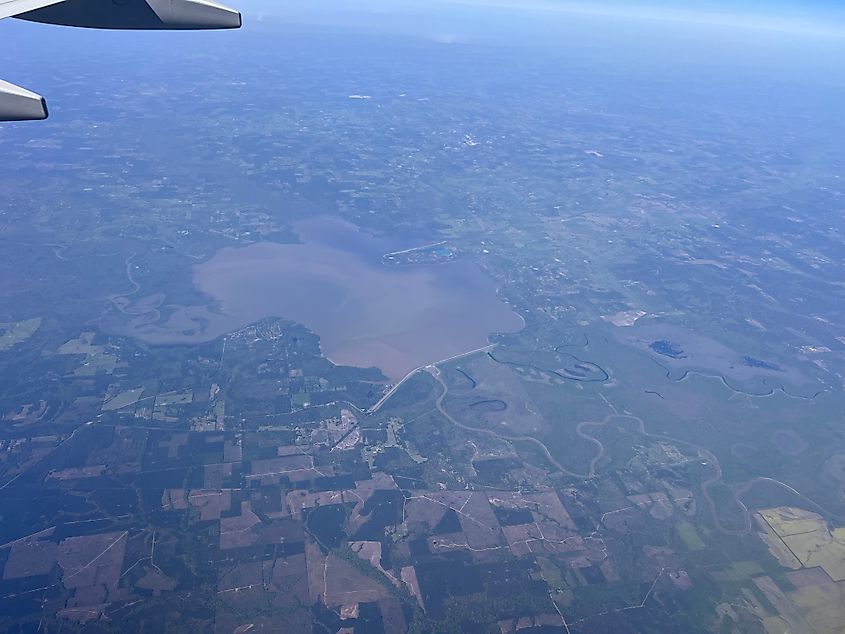
Located in southwest Arkansas, the 29,500-acre Millwood Lake is one of the largest lakes in the state and a hotspot for alligators. The reservoir is surrounded by swamps and marshlands, making it a prime habitat for the reptiles. A renowned fishing lake, it is a paradise for anglers with a wide variety of fish to catch, including largemouth and spotted bass, crappie, white bass, striped bass, and catfish, and tourists travel across the country to participate in bass fishing tournaments and fishing derbies held at the lake. The lake and surrounding area are also one of Arkansas' best birding locations, with over 300 different species.
It also has one of the largest alligator populations in Arkansas, with estimates suggesting that Millwood Lake has 3.2 alligators per mile. Millwood Lake was home to the largest alligator taken in the 2024 alligator season—a 12-foot, 6-inch-long beast. Nearby Millwood State Park offers a chance to see alligators from safe vantage points.
Arkansas Post National Memorial
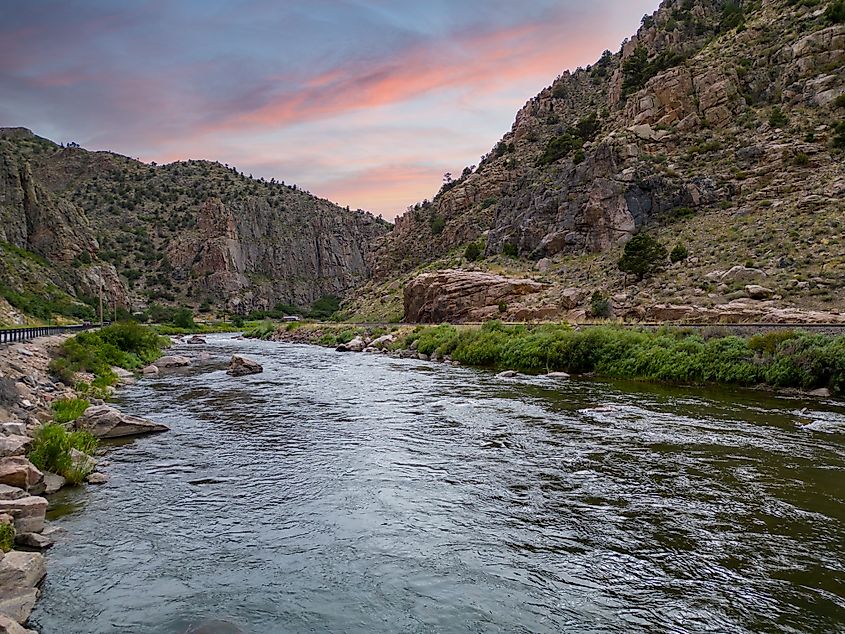
The Arkansas Post was the first settlement by Europeans in the state of Arkansas due to its prime location at the juncture of the Arkansas and Mississippi Rivers. From 1686 to 1821, it served as the local governmental, military, and trade headquarters for the French, the Spanish, and the United States. The site now houses the Arkansas Post National Memorial Visitor Center and Museum. The waters of Arkansas Post National Memorial and surrounding soughs and oxbows provide valuable habitat to over a dozen alligators, some fourteen feet long.
Bayou Bartholomew
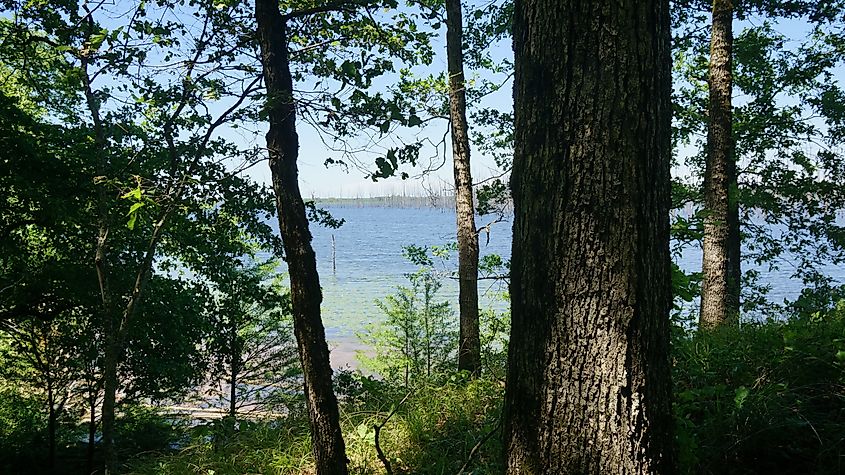
Stretching over 360 miles, Bayou Bartholomew is the longest bayou in the world. Its slow-moving waters and abundant vegetation make it an excellent habitat for alligators. The bayou, home to over 100 different aquatic species, is renowned for the enormous turtles that make their homes in the cypress and tupelo swamps surrounding the bayou.
Visitors to bayou are attracted to this second most diverse stream in North America for fishing, birdwatching, kayaking, or wildlife viewing along the lazy river, mainly for alligators and turtles. The Bayou Bartholomew Water Trail is a paradise for both seasoned and beginner paddlers looking for a serene way to explore the bayou’s natural beauty as it winds its way through the heart of the Arkansas Delta.
Grassy Lake
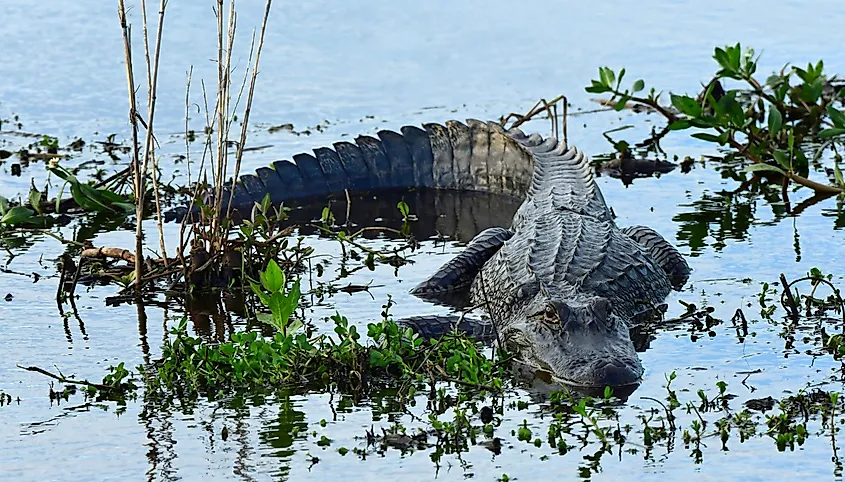
Grassy Lake, in Southwest Arkansas near Lake Millwood, has one of the state's highest alligator populations, according to the Arkansas Game and Fish Commission, supporting 91.8 alligators per mile. Another excellent spot for kayaking or canoeing, the Grassy Lake Water Trail is a 3-mile long loop that takes paddlers through mangroves with plenty of opportunities to spot alligators resting on logs in the shallow lake. Hunting is not permitted in Grassy Lake, an area stocked with alligators during the 1970s-1980s, as part of an effort to save the tupelo trees being destroyed by a thriving beaver population. Today, paddlers can expect to see nesting herons, wild turkeys, bullfrogs, migrating waterfowl, alligators, and the omnipresent beavers.
Cache River National Wildlife Refuge
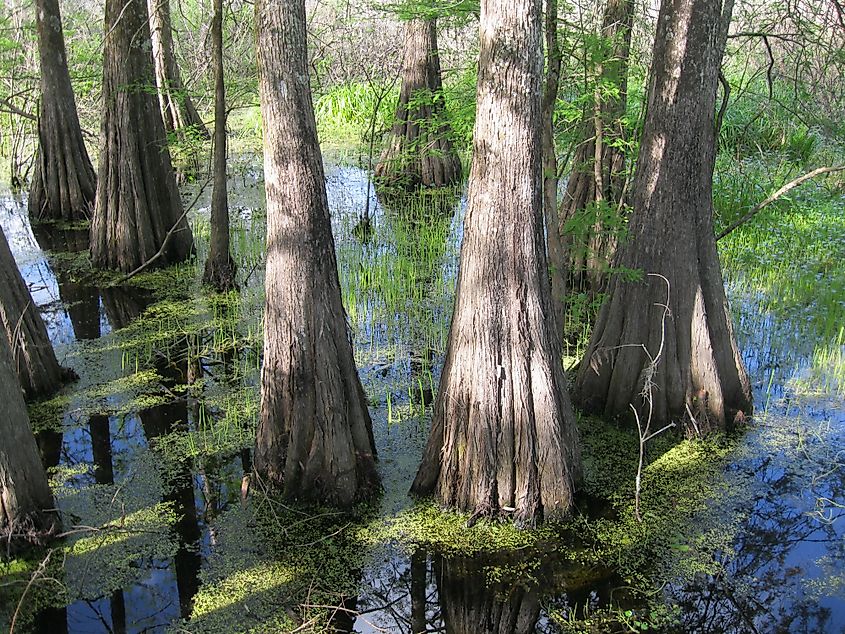
Cache River National Wildlife Refuge was founded in 1986 to protect its wetlands and cypress-tupelo swamps and provide refuge for migratory birds and wildlife between the White and Arkansas rivers. The 72,000-acre refuge is the most important destination for wintering mallard ducks in North America and is designated a "Wetland of International Importance.” Approximately one-fifth of North America’s mallard population heads south annually following the second longest river in the continent, the Mississippi River.
The refuge’s waters comprise over 400 acres of small lakes and rivers, and boat launches are scattered throughout, making it an ideal destination for paddlers, photographers, and anglers looking to catch largemouth bass, crappie, and catfish. In the backwater sloughs, boaters should be on the lookout for basking alligators, snapping turtles, and river cooters—a species of freshwater turtle native to the southeastern United States.
Felsenthal National Wildlife Refuge
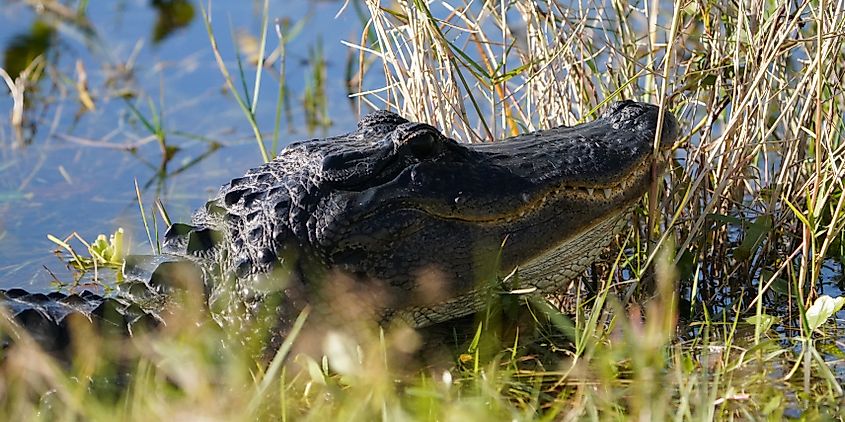
An alligator resting in the wetlands, partially submerged in the water.
Located in southeastern Arkansas near the Louisiana border, Felsenthal National Wildlife Refuge includes several wetlands, oxbow lakes, and bayous where alligators are common. The refuge encompasses approximately 65,000 acres at the confluence of the Ouachita and Saline rivers. Outdoor enthusiasts flock to the sanctuary for duck hunting, sport fishing, boating, birding, and hiking on numerous self-guided land and water trails.
Felsenthal NWR has been recognized as a globally Important Bird Area by the National Audubon Society, and it is in the Mississippi Flyway, the primary migration pathway in North America. Many species stop in the spring and fall to replenish energy for the long journey to and from wintering areas in Central and South America. Alligators are routinely seen here, especially in quiet places away from human activity.
Ouachita River
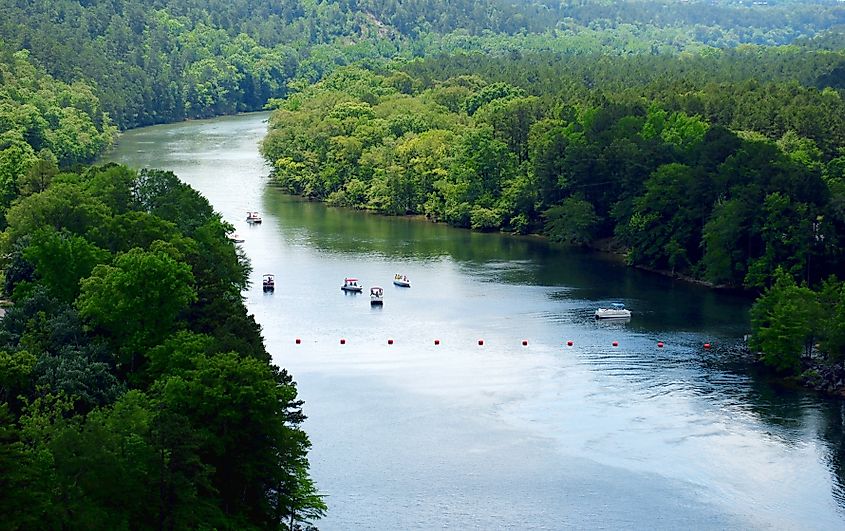
The Ouachita River originates in Mena, Arkansas, flowing southeast through the scenic Ouachita Mountains and winding through the Ouachita National Forest before continuing into Louisiana. Spanning a total length of 605 miles, the river traverses 11 Arkansas counties and six Louisiana parishes. While Louisiana’s alligator population is much greater than that of Arkansas, the river is known for supporting a larger alligator population, particularly in its southern stretches in its quiet, swampy backwaters.
After being nearly eradicated in the early 20th century, alligators can often be spotted basking on sunny riverbanks or gliding through the calm waters with the river's abundant fish and wildlife providing an ideal environment for these apex predators, which play a crucial role in maintaining the ecological balance. Visitors exploring the Ouachita River by boat are encouraged to enjoy these fascinating creatures from a safe distance.
Arkansas’s Alligator Havens
While the state is not as alligator-dense as some southern states, alligators can be found in various habitats beyond lakes in Arkansas. These environments typically include wetlands, rivers, bayous, and swamps, primarily in the southern and eastern parts of the state, where the warm climate creates suitable habitats. The most famous alligator from Arkansas was Big Arkie, an alligator 13 feet long. He was the main attraction at the Little Rock Zoo for 18 years. Weighing 500 pounds when captured and taking seven men to move him, he was considered the largest prehistoric reptile in captivity in the Western Hemisphere. There have been no reports of alligator attacks in Arkansas in the past 20 years, although an alligator hotline receives about 100 calls yearly.











